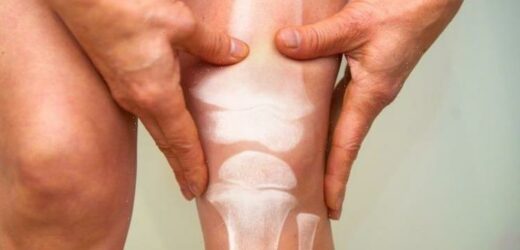Rheumatoid Arthritis: NHS on common signs and symptoms
We use your sign-up to provide content in ways you’ve consented to and to improve our understanding of you. This may include adverts from us and 3rd parties based on our understanding. You can unsubscribe at any time. More info
Scientists claim that have found a way to regrow cartilage through this process. But so far, the procedure has so far only been carried out successfully in rabbits. Researchers said their study proved that it was possible to implant a biodegradable “scaffold” that generates its own electricity. This can stimulate the regrowth of damaged cartilage, scientists say.
Cartilage acts as a shock absorber that covers the surfaces of our joints and allows our bones to slide over each other.
Osteoarthritis, the most common form of arthritis affecting 8.5 million people in Britain.
With this disease, the cartilage breaks down.
This causes pain, swelling and problems with movement.
A study in the Science Translational Medicine journal said most treatments focused on relieving pain instead of seeking to cure the condition.


It also said surgeons could use transplanted cartilage from elsewhere in the body.
But there could be complications from this.
The scientists said synthetic scaffolds, a form of artificial mesh implanted for new cartilage cells to grow on, “easily break down under repeated joint forces”.
And the body’s immune system can also cause complications.
Researchers at the University of Connecticut said cartilage was “sensitive to electrical stimulation” which could encourage the growth of new cells.

They said that negative charges could attract and absorb the proteins required for tissue regrowth.
But putting batteries into joints is intrusive and can be dangerous.
In nature, there are crystals, which when squeezed, act like tiny batteries.
Applying pressure to the crystals results in a positive electric charge building up on one side.
On the other side, a negative charge builds up. This generates an alternating current voltage, in a process known as piezoelectricity.
Researchers made a mesh made out of “poly-L lactic acid” (PLLA).
DON’T MISS
Archaeology breakthrough: Rare armour found in ancient China [REPORT]
Brexit Betrayal: Boris on brink as Labour forces vote on scrapping VAT [INSIGHT]
China’s Moon rover determines ‘mystery hut’ identity [REVEAL]

PLLA is a biodegradable material that is usually used to stitch up open wounds, and it has piezoelectric properties.
When used within a joint affected by osteoarthritis, the material has been shown to create a weak but steady electric field as it is squeezed in regular use of the joint.
The study found that this “improved chondrogenesis [the formation of new cartilage] and cartilage regeneration” in a laboratory as well as in live animals.
The study also revealed that rabbits with severe cartilage defects that had the scaffold implanted into their knees experienced “completely healed cartilage” within just three months of surgery.
Thanh Nguyen, a bioengineer at the University of Connecticut, said: “This is a fascinating result, but we need to test this in a larger animal.”

In the UK, more than 10 million people have arthritis or other, similar conditions that affect the joints.
Arthritis can affect people of all ages, including children.
But is most common in people in their mid-40s or older.
Osteoarthritis treatments that have previously been suggested by doctors include lifestyle changes, medicines and surgery.
Source: Read Full Article


